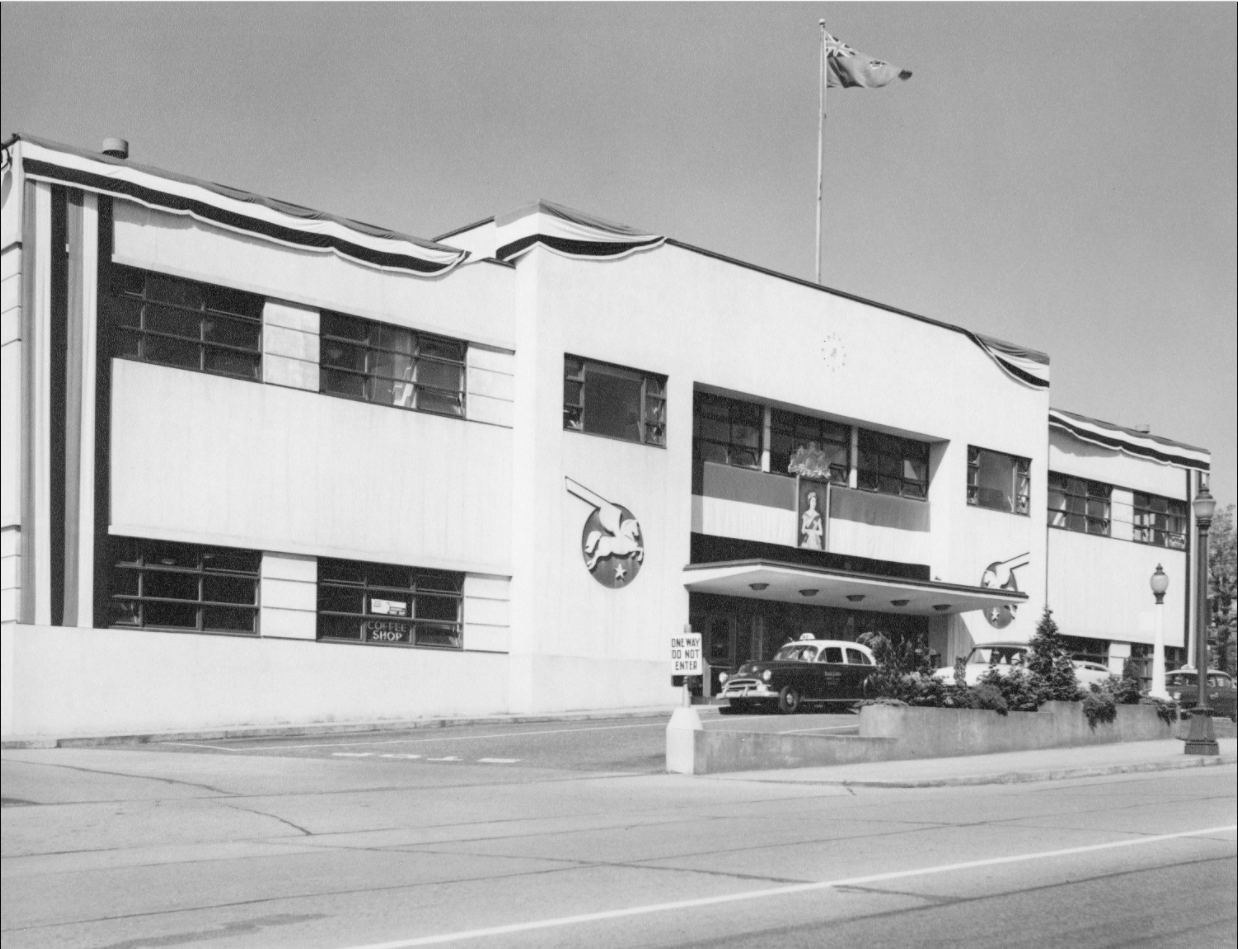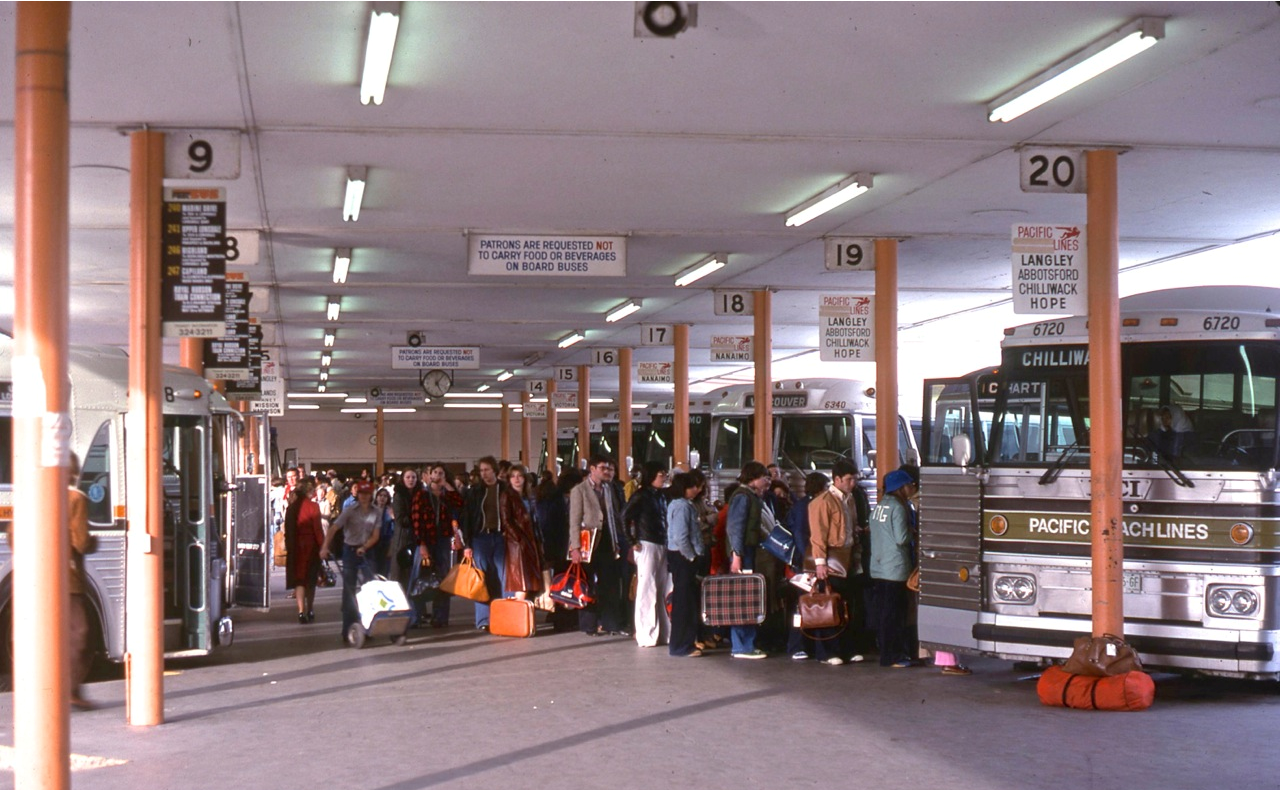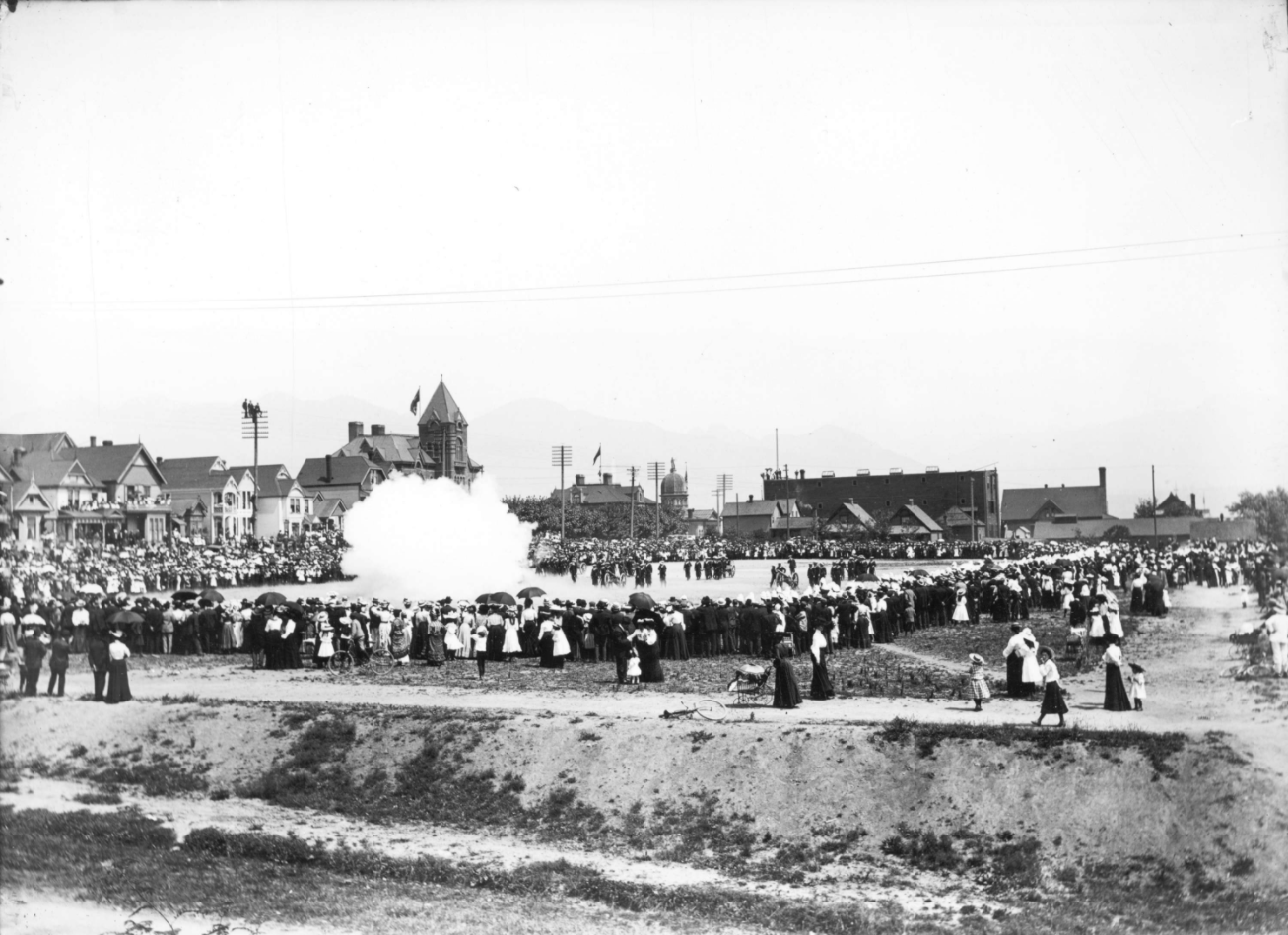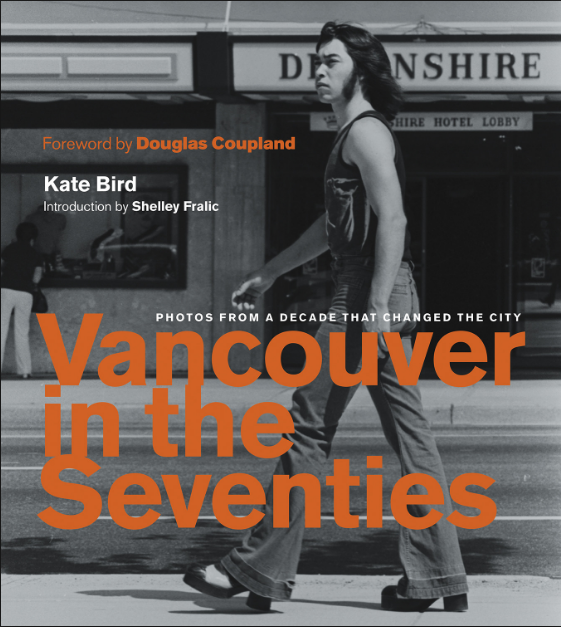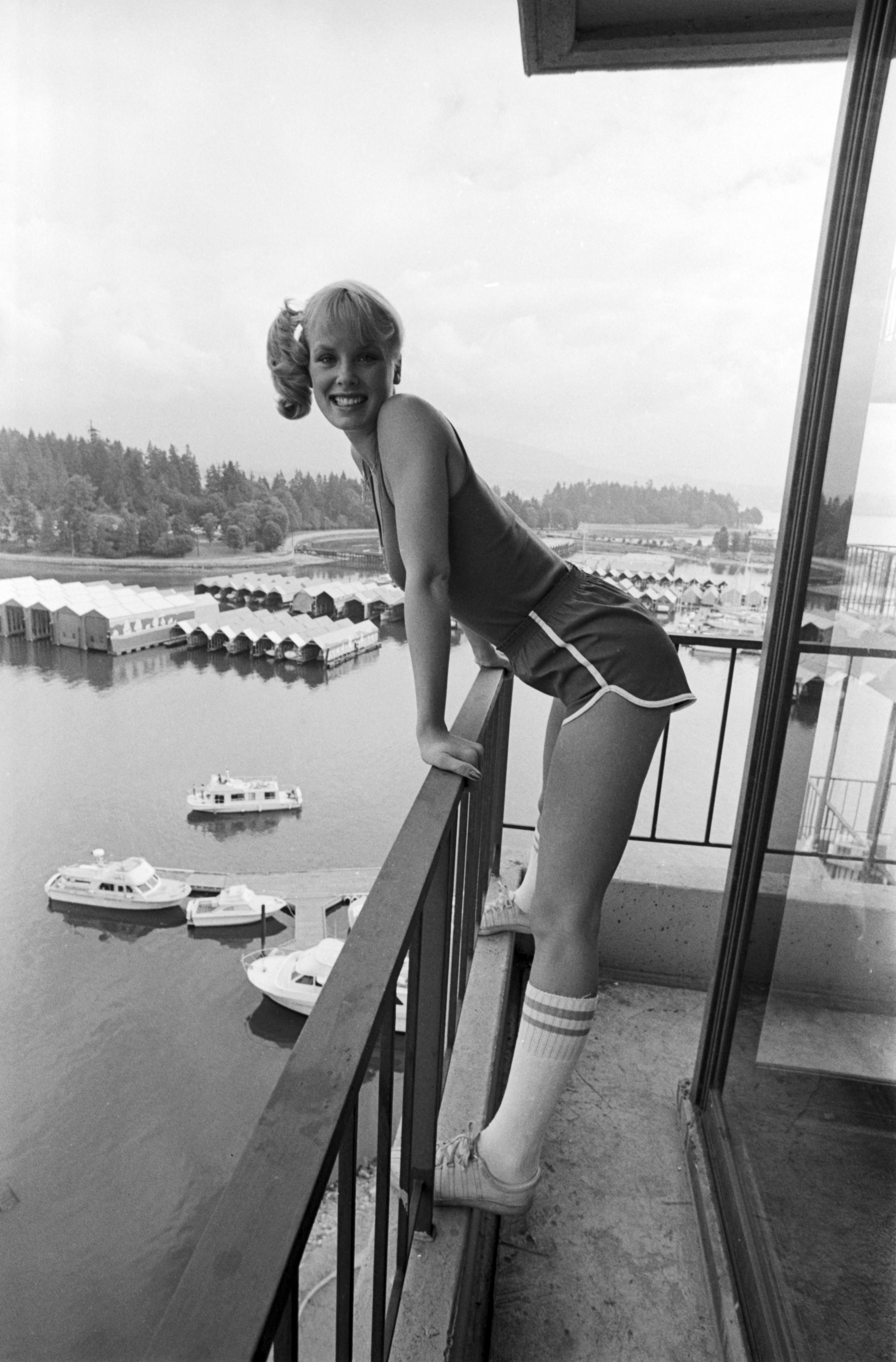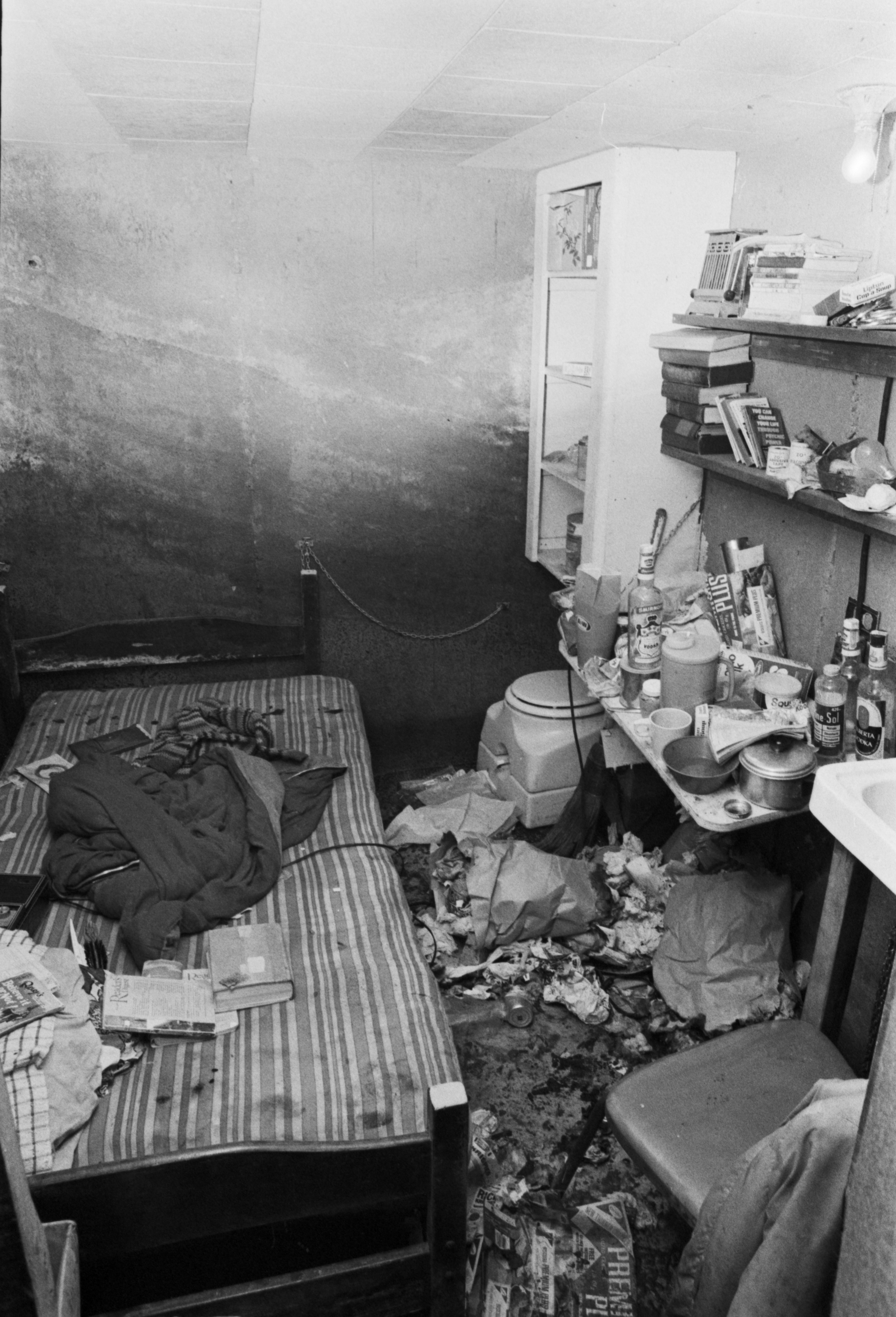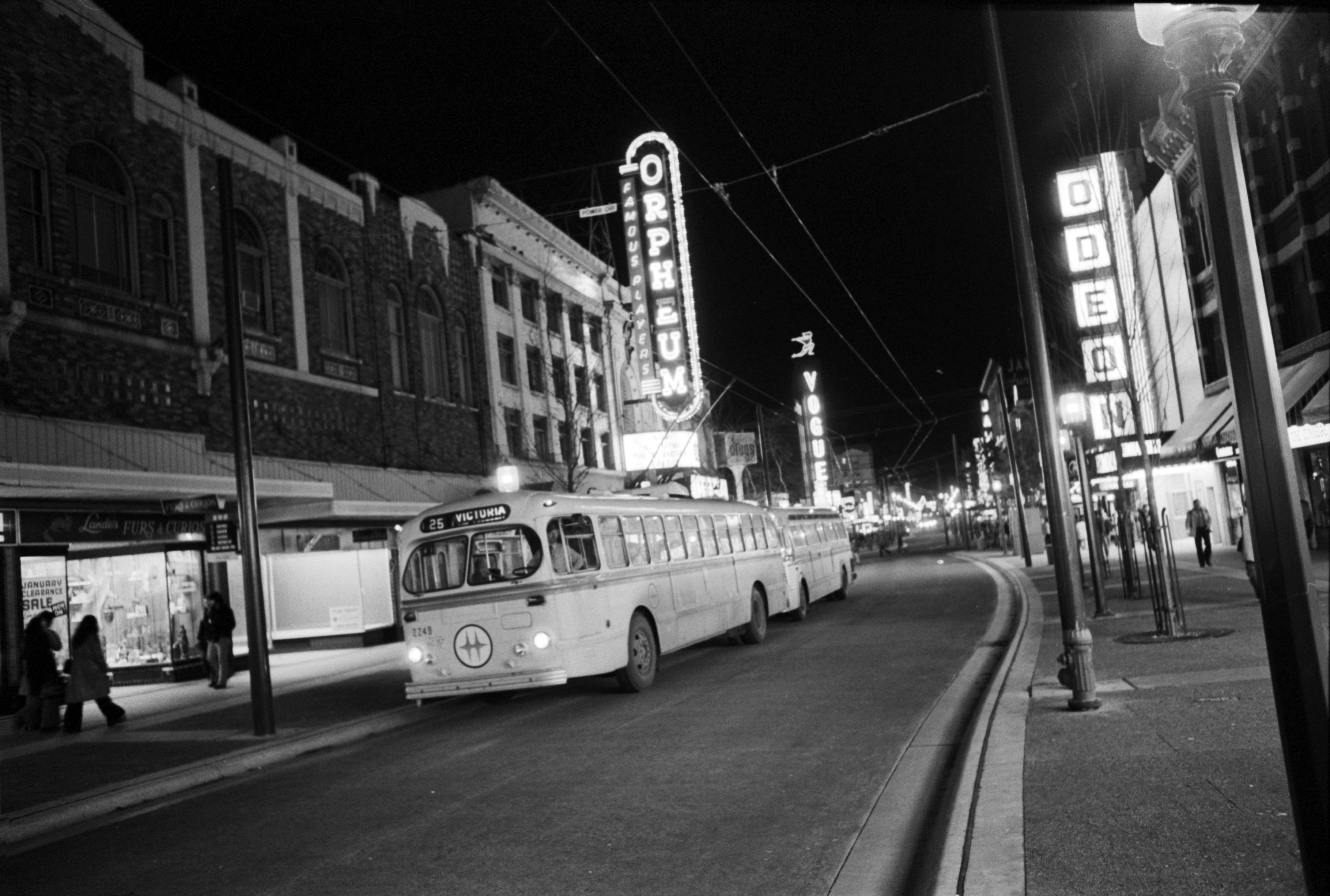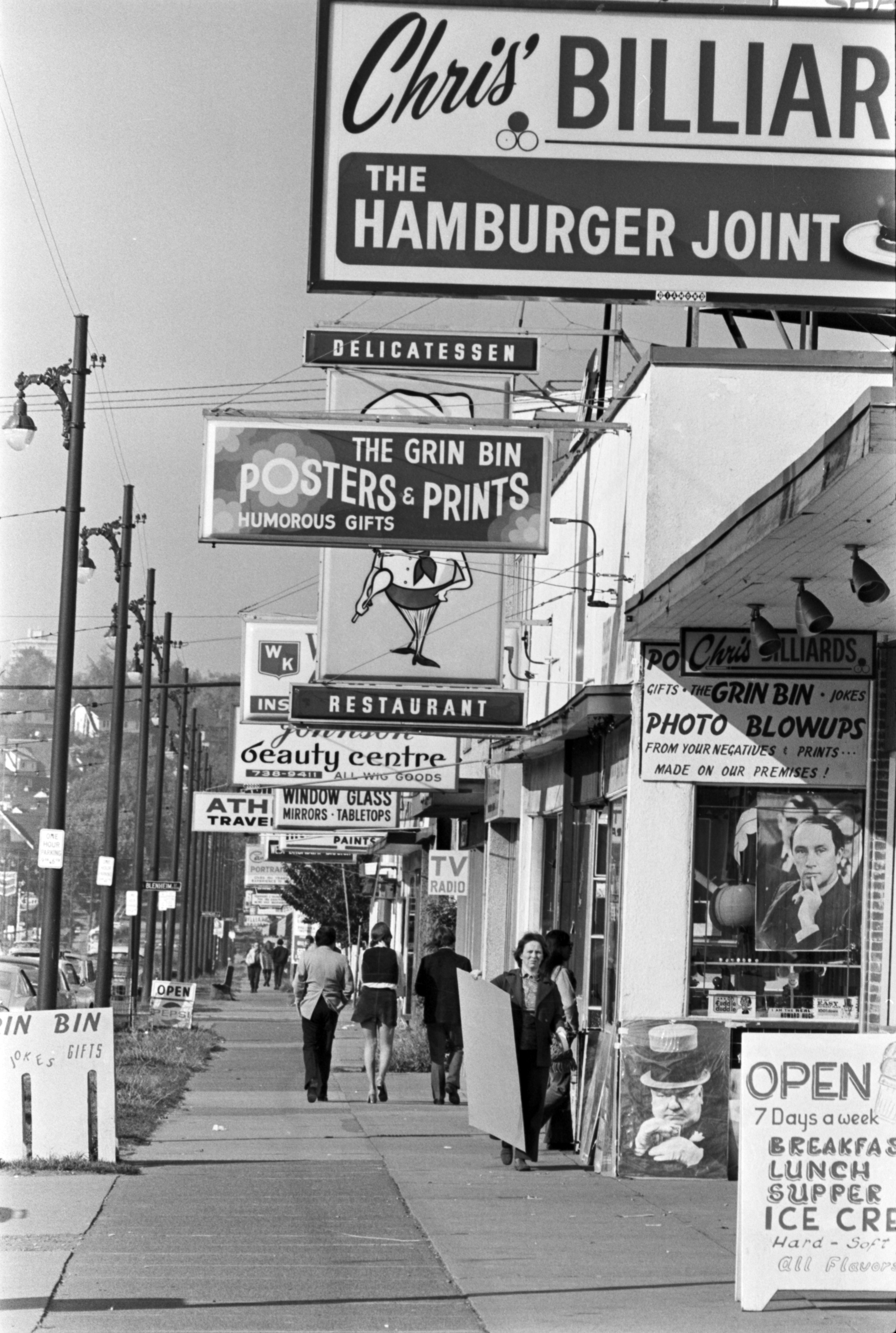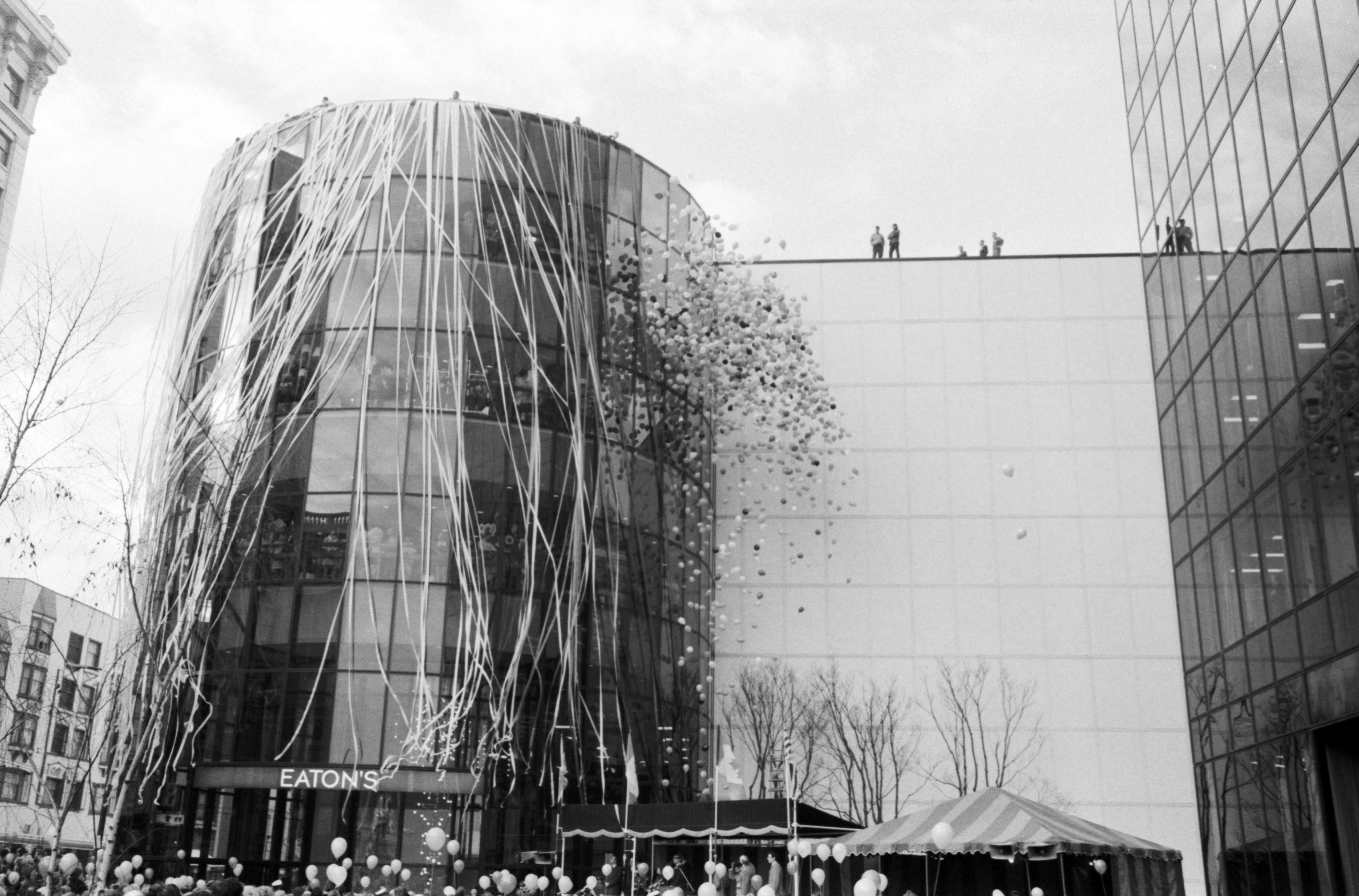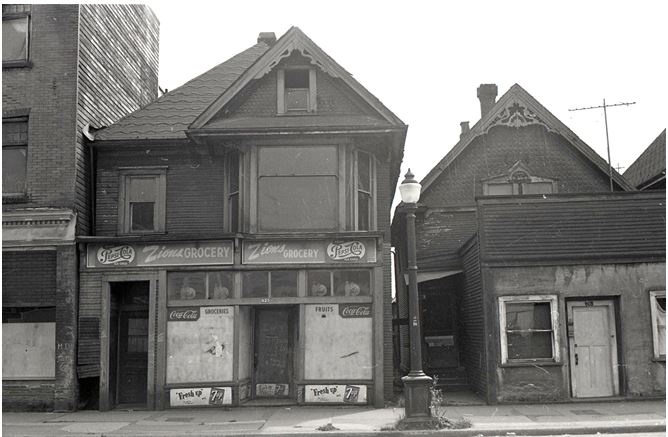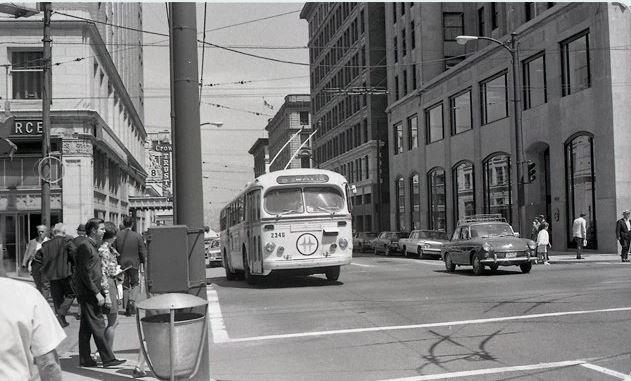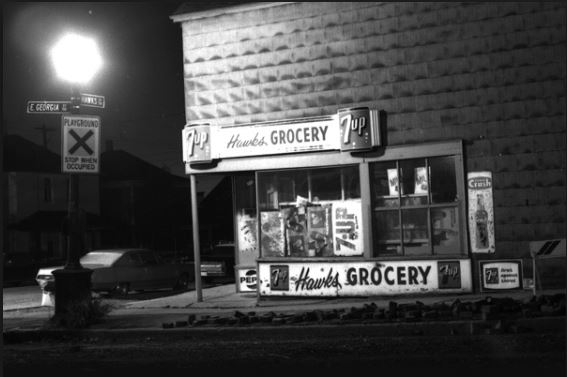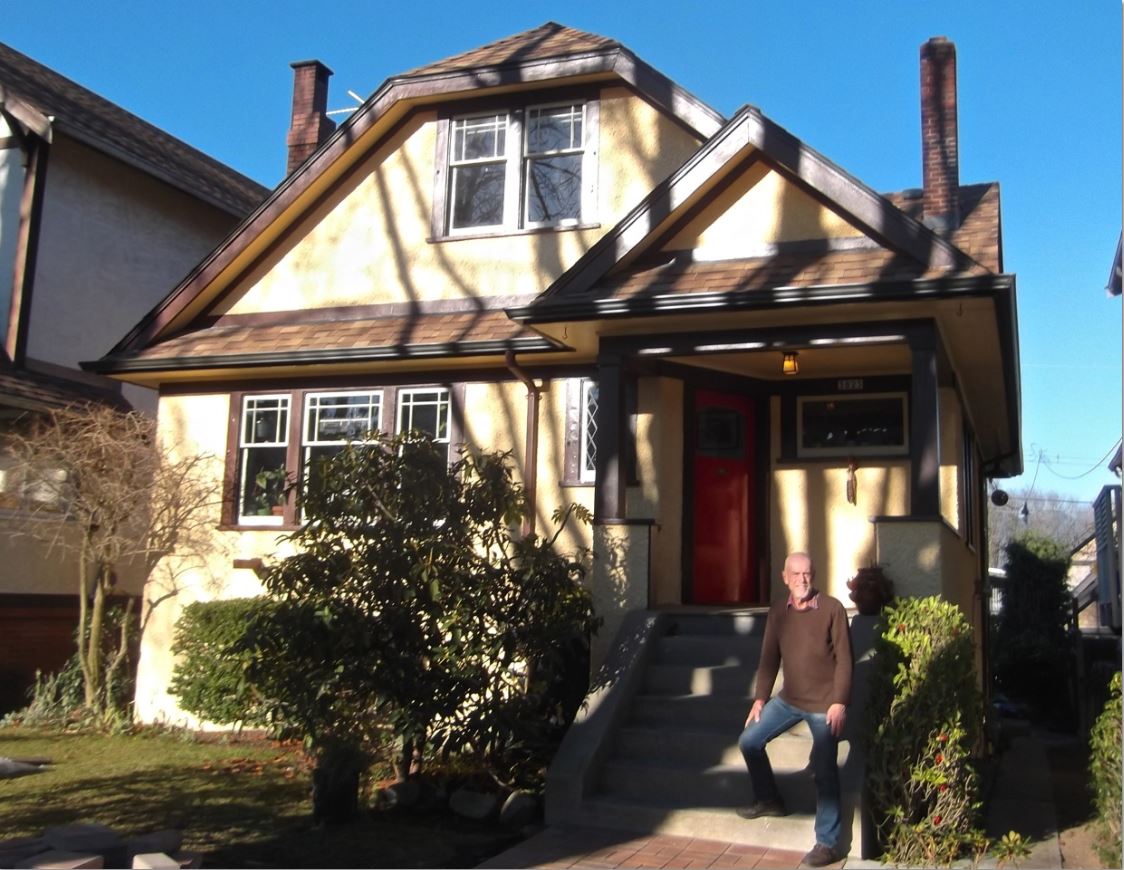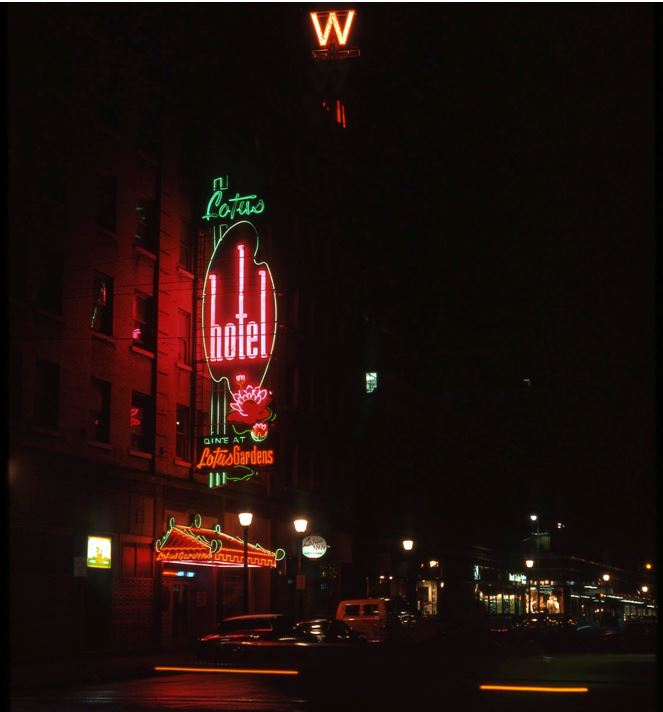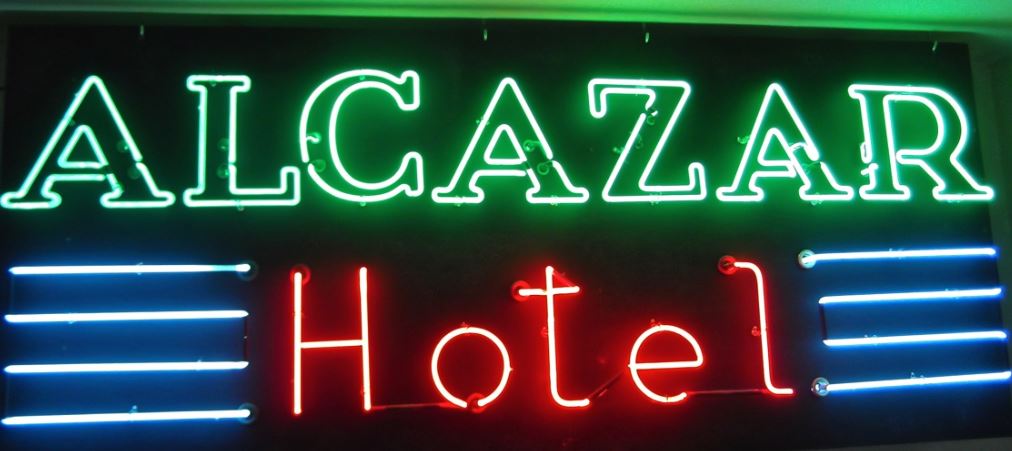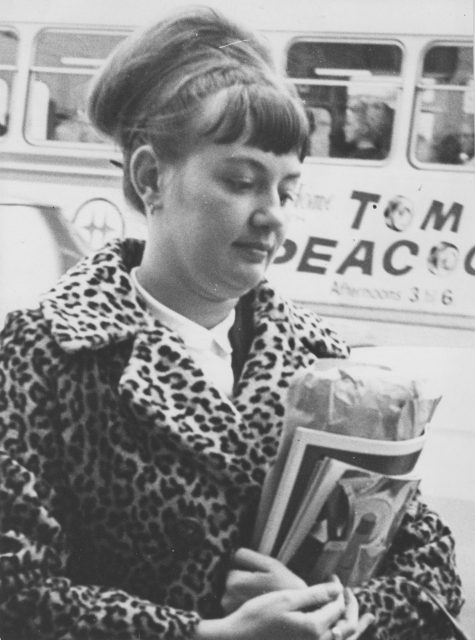 Angus McIntyre was reading Murder by Milkshake when he stopped and took a closer look at a photo snapped by the Vancouver Sun’s Dan Scott in December 1966.
Angus McIntyre was reading Murder by Milkshake when he stopped and took a closer look at a photo snapped by the Vancouver Sun’s Dan Scott in December 1966.
Where I saw a rare photo of Lolly Miller leaving court during the murder trial of her lover, Rene Castellani—Angus was looking at the background.
“I just noticed something about Lolly Miller’s photo on page 58,” said Angus, who was a Vancouver bus driver for 40 years. “In the background there is a Brill trolley bus, with the B.C. Hydro logo visible. On the side there is an advertisement–this was for a disc jockey on CFUN, Tom Peacock.”
The ad reads “Tom Peacock. Afternoons 3 to 6.”
Radio plays a prominent part in Murder by Milkshake. In 1965, CKNW personality Rene Castellani murdered his wife Esther with arsenic so he could marry the station’s 20-something receptionist Lolly Miller.
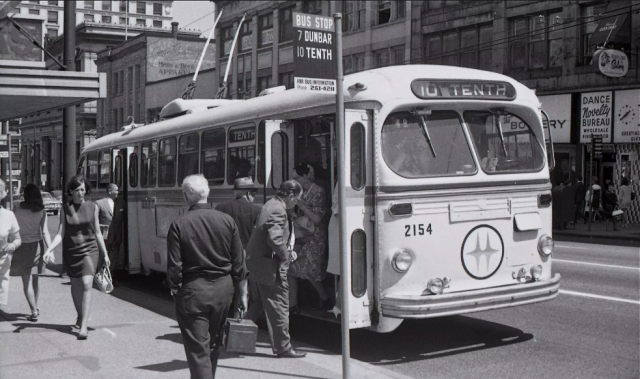
“I just thought it was ironic that behind Lolly there was an ad for a rival radio station,” says Angus who moved to Vancouver in 1965.
“CFUN had a request line phone number, REgent 1-0000, promoted as ‘REgent ten-thousand, CFUN Requestomatic’. It almost always had a busy signal in the days of relay switches in the telephone exchanges, and kids would yell out their phone numbers over the sound of the busy signal to get a call back,” says Angus. “Some of their contests had so many people phone in that parts of the REgent exchange would crash.”
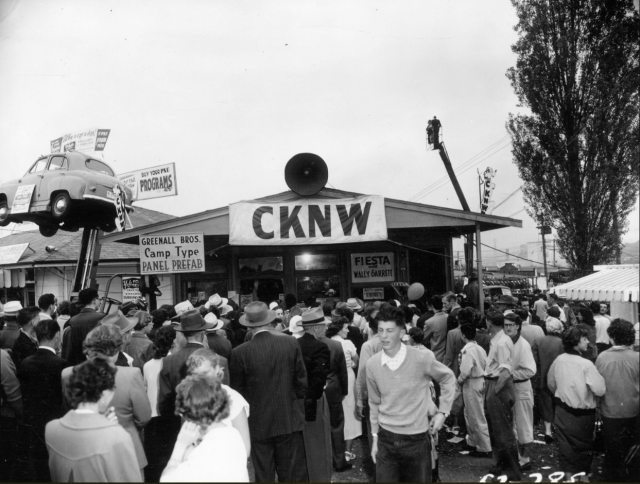
According to his broadcast bio, Peacock eventually moved to CKWX (1130) and became the station’s general manager. He died in 2006, at age 67.
In 1965, CKNW was still the “Top Dog,” and as George Garrett, a news reporter for the station for over four decades, told me, “We were the most promotions minded station you could imagine.” The station’s deejays included Jack Cullen, Jack Webster and Norm Grohmann. Over at CFUN, a top 40-station at the time, deejays (below) were Red Robinson, Al Jordan, Fred Latremouille, Tom Peacock, Ed Kargl, Mad Mel, and John Tanner.
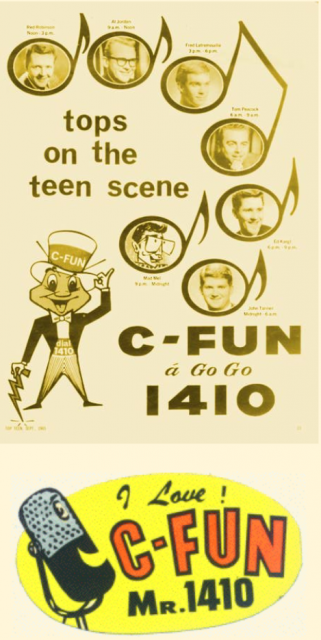
It depends what source you look at, but I find it hard to argue with thoughtco.com’s top 10 picks of 1965:
- I Can’t Get No Satisfaction; The Rolling Stones
- Like a Rolling Stone; Bob Dylan
- A Change is Gonna Come; Sam Cooke
- Tambourine Man; The Byrds
- Ticket to Ride; The Beatles
- I’ve Been Loving You Too Long; Otis Redding
- Papa’s Got a Brand New Bag; James Brown
- My Girl; The Temptations
- Stop! In the Name of Love; The Supremes
- Do you Believe in Magic?; The Lovin’ Spoonful
Top photo: Lolly Miller. Photo by Dan Scott/Vancouver Sun [PNG Merlin Archive]
Murder by Milkshake is now a two-episode Cold Case Canada podcast:
© All rights reserved. Unless otherwise indicated, all blog content copyright Eve Lazarus.


